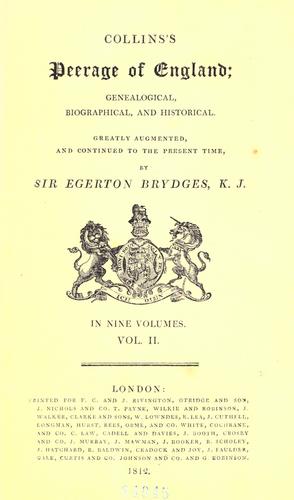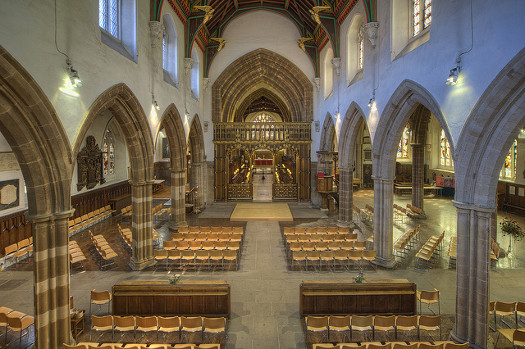Enquiring Readers: Ron Dunning has previously posted here at Jane Austen in Vermont about his invaluable Jane Austen genealogy website. As he continues to research the connections, he is discovering amazing coincidences and some very familiar names. Today he gives some insight into a marriage that took place between a Darcy and a de Burgh in 1329 and speculates on whether Jane Austen could possibly have known about this…
***************

What Jane Might Well Have Known, and What She Couldn’t Possibly Have Known, About Her Ancestors
I’m against making any assumption based on slim evidence, but I’m about to make two; first of all, concerning a great coincidence about which Jane can’t have known anything. In 1329 a marriage took place between John Darcy, 1st Lord Darcy of Knaith, and Joan de Burgh. (The spelling doesn’t matter – even up to the 18th century spellings hadn’t been fully standardised.) Joan’s father Richard de Burgh, 2nd Earl of Ulster, was a direct ancestor of Mrs Austen through her brother John.
Last summer when my Akin to Jane [ www.janeaustensfamily.co.uk ] website was launched one or two people, with admirable perseverance, trawled through my separate family tree [ http://wc.rootsweb.ancestry.com/~janeausten ] and on discovering this marriage, insisted that Jane must have known. I was never in any doubt that she couldn’t possibly have known. This was also the opinion of the only other person who has studied the Austen pedigree extensively, Anielka Briggs.

Dugdale Baronage – Skinnerinc.com
While Baronetages were readily available in the late 1700s, the dignity having been created only in 1611, there were very few studies of the Peerage and all of those were very primitive. William Dugdale’s Baronage of England of 1675 covered only England. (Remember that Joan’s father John de Burgh was the Earl of Ulster; the marriage in question is said to have taken place in County Kildare.)
The Rev. Barlow’s Complete English Peerage was printed in 1772, so might just have been in George Austen’s library, but again deals just with English peerages. Another possibility, Arthur Collins’s Peerage series*, was first published in 1709, with reprints every few years and frequent new editions. Even he appears not to have included Irish peerages, and in the eight editions that I was able to search, not a single de Burgh featured in the indexes.

Barlow Peerage – Open Library
A further obstacle in the way of Jane’s knowing (or for that matter anyone at the time) is that there was no direct male descent from the de Burghs to the Austens – the surname soon disappeared from Jane’s pedigree, through a series of female links. Traditional pedigrees concentrate on the direct male line.
However, John Darcy did himself play a role in the Austen pedigree – he was a many-greats-grandfather of Charles Austen’s wives, the sisters Frances and Harriet Palmer. John and his first wife, Emmeline Heron, were the ancestors of four generations of male Darcys; Elizabeth Darcy, in the fifth generation, married James Strangeways; and that surname continued down to the Palmer girls’ paternal grandmother, Dorothy Strangeways. In Charles’s children, the Darcy and the de Burgh lines were finally united.
My second assumption concerns what Jane might well have known. Janine Barchas, in her Matters of Fact in Jane Austen, speculates that she, in choosing the names of Darcy, Wentworth, Woodhouse, FitzWilliam, Tilney, etc., was alluding “to actual high-profile politicians and contemporary celebrities as well as to famous historical figures and landed estates.” In the words of Juliet McMaster in the blurb, she was “a confirmed name dropper who subtly manipulates the celebrity culture of her day.” On page 118 Janine Barchas wrote, “Cassandra Willoughby (…) the supposed ancestor of Mrs Austen.” Yes – she’s almost got it. Cassandra was Mrs Austen’s 1st cousin, twice removed.

I think that Jane may well have known about the family relationship and its relevance. Cassandra’s mother Emma (Willoughby and then Child, née Barnard) was Cassandra Leigh’s great-great-aunt; it was Emma’s sister Elizabeth (Brydges, née Barnard) who was her great-grandmother. Elizabeth was also the mother of James Bridges, the Duke of Chandos, who married Cassandra Willoughby – the two were cousins. Emma’s first husband was the noted naturalist, Francis Willoughby; after his death she remarried, to Sir Josiah Child – supreme governor of the East India Company, an early monetarist, and a rapaciously wealthy financier to 17th century royalty. Emma and Sir Josiah’s son Richard Child became the Earl Tylney of Castlemaine, and one of his great-granddaughters was Catherine Tylney-Long.
Barchas speculates that Jane, in naming her Catherine Tilney, had this other Catherine in mind. This lady had inherited a vast estate and fortune in 1794 at the age of 5, and at 18 was reputedly the richest commoner in England. Catherine Tylney was Jane Austen’s 4th cousin. Very few of us have any idea about our fourth cousins, but based on the following circumstantial evidence, I suspect that Jane did know that they were distantly related.

Catherine Tylney-Long – Wanstead House

Wanstead House
[Image: Wanstead House ]

Mrs. Austen
There is a strong tradition in the Warwickshire village of Middleton, the seat of Francis Willoughby, that Jane visited there on the trip to Staffordshire in 1806 with her mother and sister. Middleton certainly lies in a direct line, as the crow flies, from their stop at Stoneleigh to Hamstall Ridware, where her cousin was the Rector. If they did visit, it may have been because Mrs Austen knew of the family relationship – she was certainly considered to have been proud of her aristocratic ancestors. The Austens preserved a letter written by Elizabeth Brydges in the 1680s from Constantinople, giving advice to her daughter who had been left behind; I think it likely that she’d have known about Elizabeth’s sister Emma’s illustrious marriages, and have told her daughters.
*********************
Thank you Ron! for all this information [my head is spinning!] – I do wonder what Lady C might say to all this – would she be concerned about the “Shades of Pemberly [being] thus polluted” by any of these illustrious ancestors?
If you have questions for Ron, please comment below.
Ed. Note: * Collins Peerage:

Collins Peerage – 1812 ed.
Just again to prove once again that all roads lead back to Jane Austen, it is interesting here to note that Egerton Brydges edited this 1812 edition of the Collins Peerage – this is Jane Austen’s very own Mr. Brydges, brother to her friend Madame Lefroy. Austen makes much of his novel Arthur Fitz-Albini (1798) in her letter of 25 November 1798:
We have got Fitz-Albini; my father has brought it against my private wishes, for it does not quite satisfy my feelings that we should purchase the only one of Egerton’s works of which his family are ashamed. That these scruples, however do not at all interfere with my reading it, you will easily believe. We have neither of us yet finished the first volume. My father is disappointed – I am not, for I expected nothing better. Never did any book carry more internal evidence of its author. Every sentiment is completely Egerton’s. There is very little story, and what there is [is] told in a strange unconnected way. There are many characters introduced, apparently merely to be delineated. We have not been able to recognize any of them hitherto except Dr and Mrs Hey and Mr. Oxenden, who is not very tenderly treated…. [Letters, No. 12]
*****************
Further reading:
1. Ron Dunning’s Jane Austen websites:
2. Janine Barchas links:
3. History of Catherine Tylney-Long at Wanstead Park website: http://www.wansteadpark.org.uk/hist/the-owners-of-wanstead-park-part-10-1784-1825/
4. Wanstead Wildlife.org [information and above image]: http://www.wansteadwildlife.org.uk/index.php/home/list-of-people?id=101
5. William Dugdale Baronage [above image]: https://www.skinnerinc.com/auctions/2526B/lots/212
6. Frederic Barlow. Complete English Peerage (London, 1775): [complete text and above image]: http://openlibrary.org/books/OL24241621M/The_complete_English_peerage
7. Collins’s Peerage of England: [complete text and above image]: http://openlibrary.org/books/OL7054900M/Collins’s_peerage_of_England_genealogical_biographical_and_historical.
8. A nice introduction to Charles Austen at Austenprose.
c2013 Jane Austen in Vermont



































